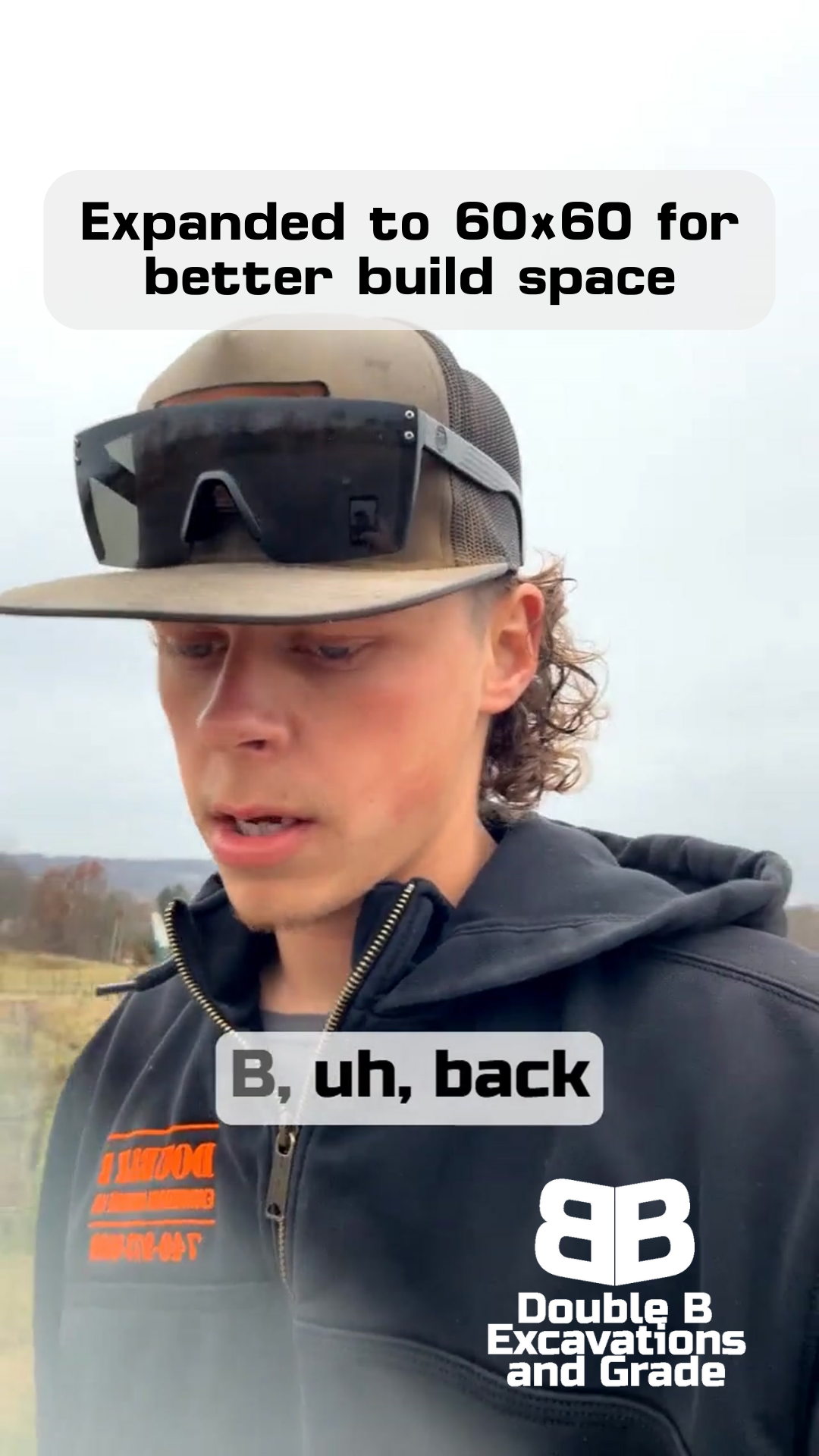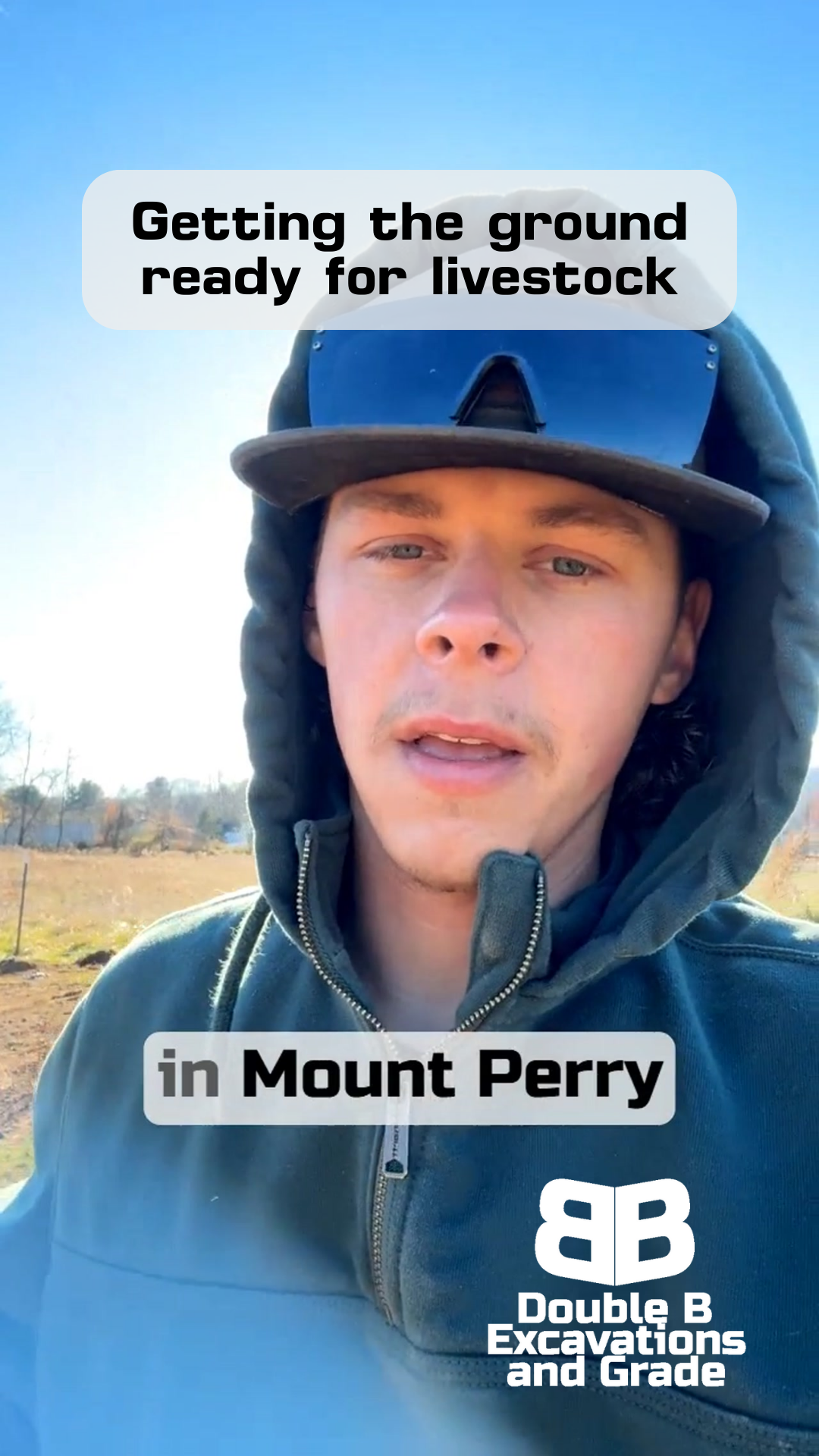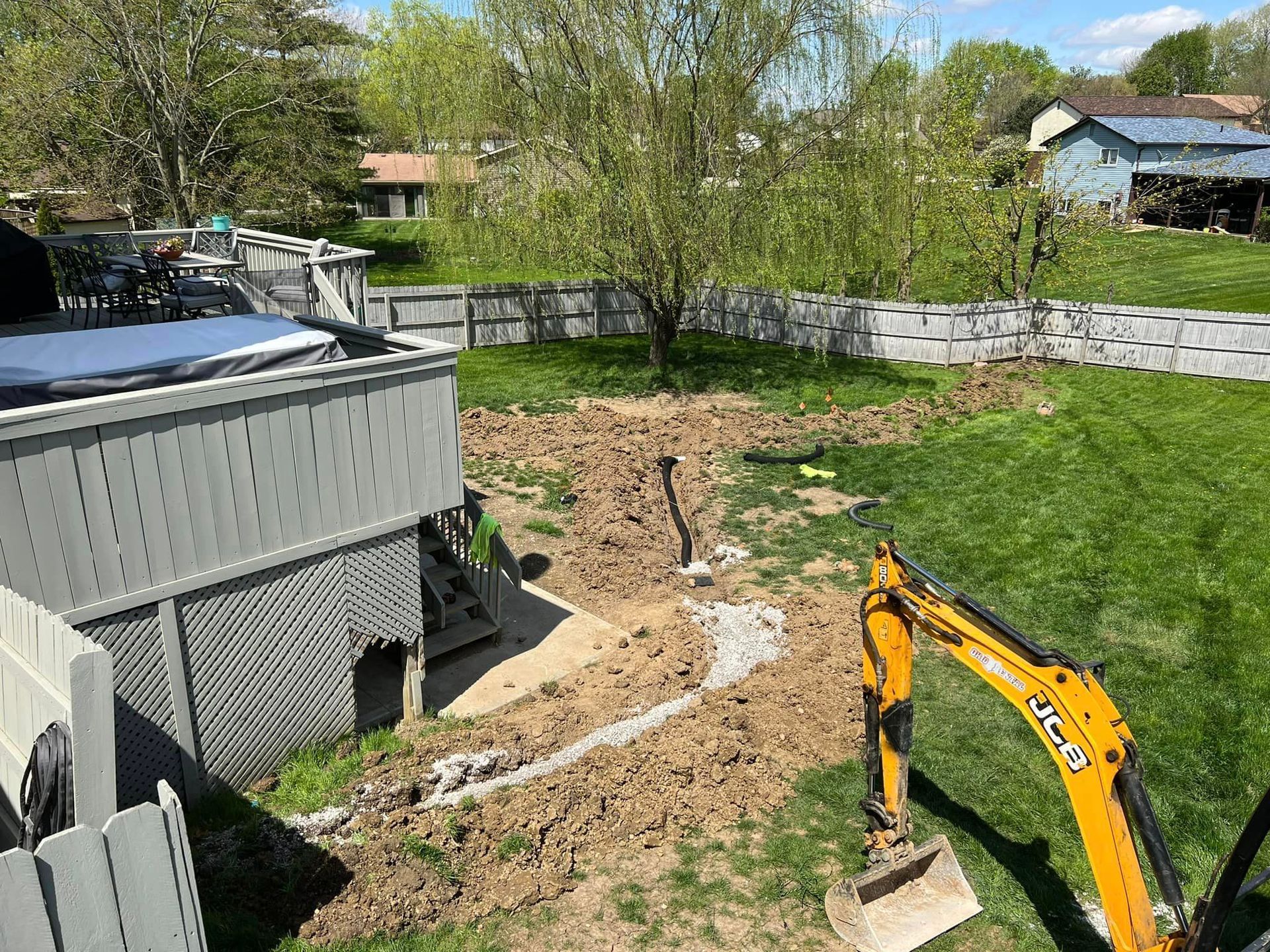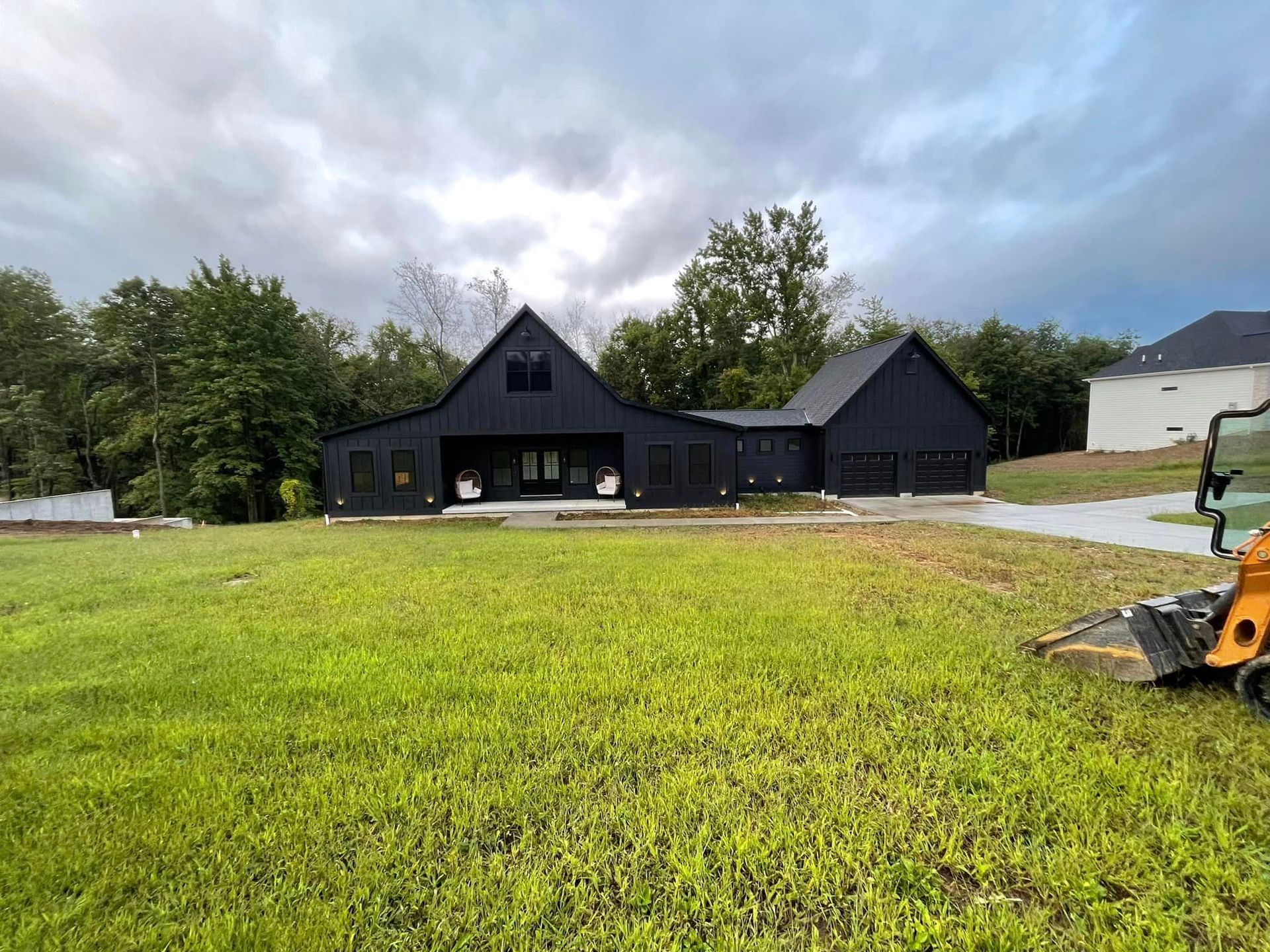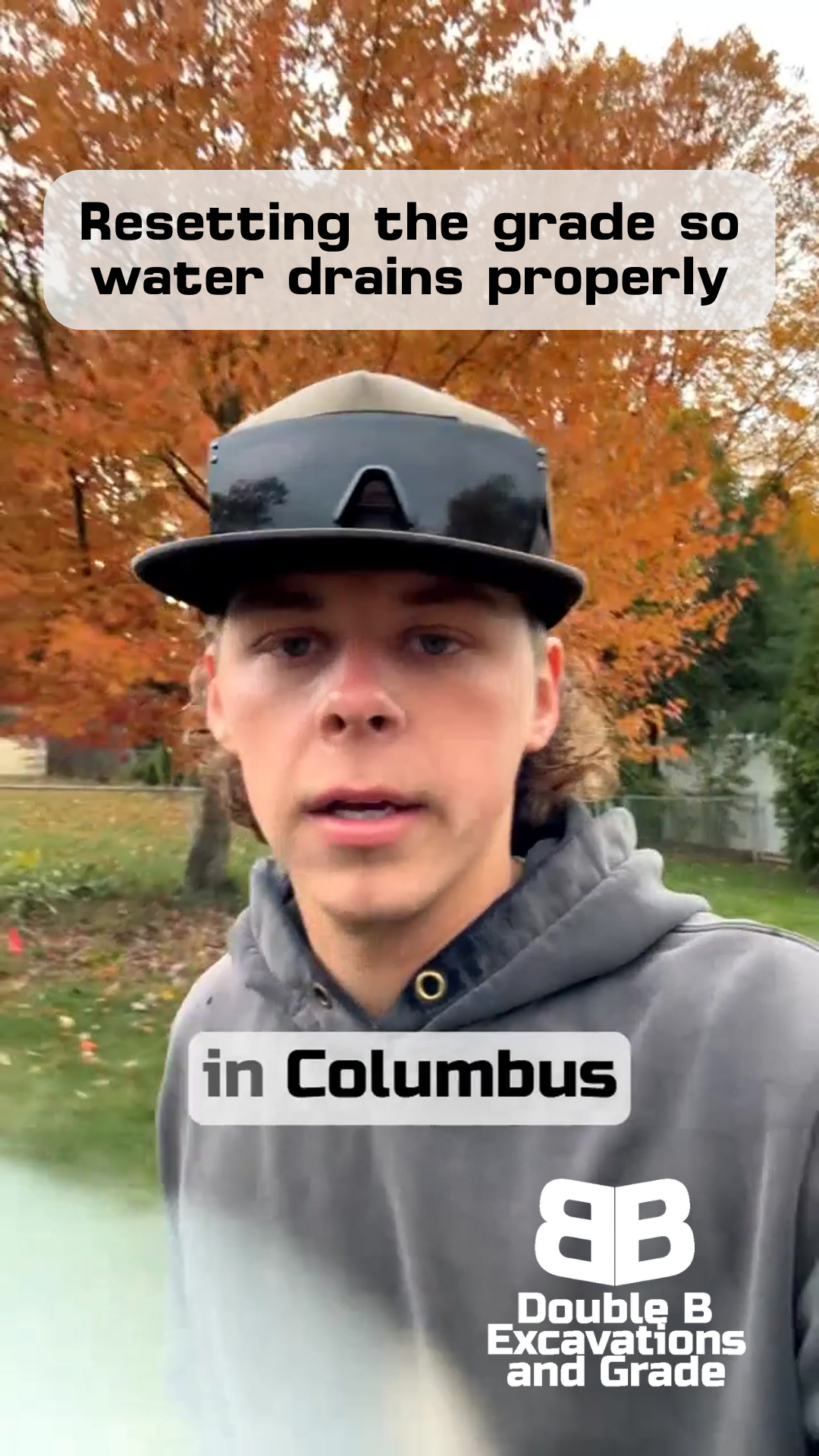How to Make a Perfect Circle for Excavation: Simple Tools, Professional Results
Double B Excavations & Grade LLC
A Perfect Circle With a Screwdriver
LOW-TECH LAYOUTS THAT DELIVER HIGH-LEVEL ACCURACY
In excavation, sometimes the best solutions are the simplest ones.
We're out here in Grove City today, working on a project that requires a perfect circle in a tight space.
When most people think about modern excavation, they probably picture GPS-guided equipment and fancy technology.
But I'm about to show you how we get precision results using nothing more than a screwdriver and a tape measure.
Getting circles right matters more than you might think.
Whether we're prepping for a pool installation, creating a fire pit area, or laying the groundwork for a circular patio, being off by even a few inches can cause big problems down the line.
That's why we stick to methods that work every time, no matter the conditions.
Welcome to Double B!
The Challenge of Circular Excavation
Let's talk about why making circles isn't as simple as it might seem. First off, you're usually dealing with some kind of space constraint. Take our current project in Grove City - we're working in a backyard with existing structures, fence posts, and limited access. This is pretty typical for residential work.
Then there's the accuracy factor. You might think "close enough" works for a circle, but here's the reality: when you're installing something like a pool or a patio, being off-center or uneven means problems with everything that comes after. Concrete won't pour right, pavers won't fit properly, and pool walls won't line up correctly. That's why "eyeballing it" just isn't an option for professional results.
We see it all the time - someone tries to save time by estimating or using makeshift methods, and they end up having to redo the whole thing. In excavation, like most things, doing it right the first time saves everyone time and money in the long run.
The Simple Tool Method
Let me break down exactly how we do this. You don't need fancy equipment - just three basic tools: a screwdriver, a 100-foot tape measure, and some marking paint. That's it. This method has been around for generations because it flat-out works.
Here's how we do it: First, we identify where we want the center of our circle. This is crucial - everything depends on this point being exactly right. We drive the screwdriver into the ground at this spot. Think of it like the center point you used to use with a compass in math class. Next, we attach one end of our tape measure to that center point. The length of the tape measure becomes our radius - that's half the width of your final circle. Then, while one person holds the center point steady, another walks the tape measure around in a circle, marking with paint as they go. Simple as that.
Professional Tips for Perfect Results
Now, let me share some things we've learned from doing this hundreds of times. When you're working in tight spaces like our Grove City project, you've got to think about more than just making the circle. You need to plan for how you'll move equipment around that space, where you'll put the dirt you dig out, and how to work around obstacles.
Speaking of obstacles - we had to remove some fence posts on this job. Luckily, the homeowner was getting a new fence anyway, so we didn't have to worry about putting them back. But here's a pro tip: always check what's in your circle's path before you start. Underground utilities, tree roots, existing structures - these all need to be factored in before you make your first mark.
Another thing we pay close attention to is dirt management. On this job, we're trying to spread some of the excess dirt around the property before hauling any away. This saves time, money, and makes cleanup easier. It's these kinds of details that separate a professional job from an amateur one.
Why This Method Works
Let's talk about why we stick with this simple approach when there are fancier options out there. First off, it's reliable - we've used this method on hundreds of projects, and it hasn't let us down yet. There's no batteries to die, no calibration needed, and no expensive equipment that could break down.
But more than that, it's fast and efficient. Once you've got your center point set, you can mark out a perfect circle in minutes. Whether we're marking out a small fire pit or a large pool, the process stays the same. It works in any weather, on any terrain, and you can easily double-check your measurements as you go.
Real World Application
Back to our Grove City project - this is exactly the kind of situation where this method proves its worth. We're dealing with a tight backyard space, existing structures to work around, and we need precise measurements for what's being installed later. By using this simple method, we can be absolutely certain our circle is perfect before we start digging.
Here's something most people don't think about: when you're excavating a circle, you're not just digging a hole. You're creating the foundation for something that needs to last for years. Whether it's a pool, a patio, or a fire pit, getting that initial circle right means everything that comes after will fit correctly.
Conclusion
At Double B, we believe in using the right tool for the job - sometimes that's a big piece of machinery, and sometimes it's just a screwdriver and a tape measure. What matters isn't how fancy your method is, but whether it gives you consistent, professional results.
If you're planning a project that needs precise circular excavation, don't get caught up thinking you need complicated solutions. But also remember that while this method is simple, getting professional-grade results takes experience. We're always happy to take a look at your project and help you figure out the best approach.
Next time you see a perfectly circular pool or patio, remember - it probably started with nothing more than a screwdriver and a tape measure. Sometimes the oldest tricks really are the best ones.
